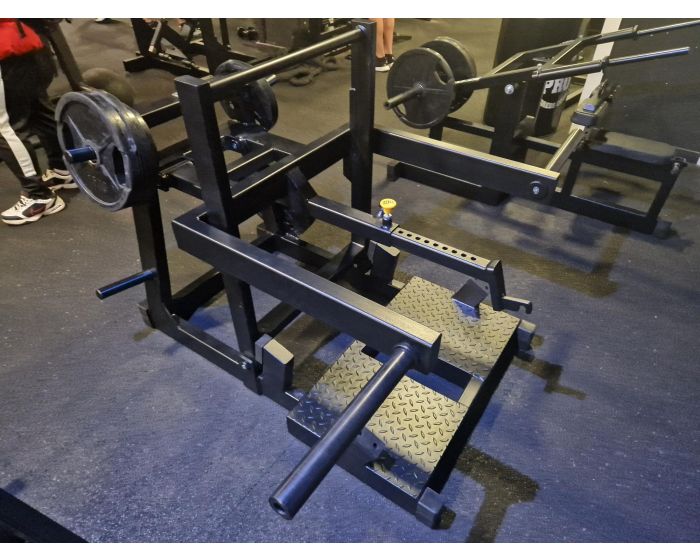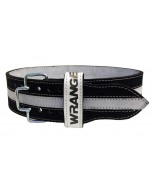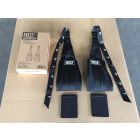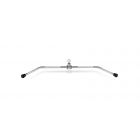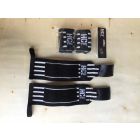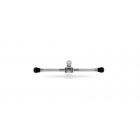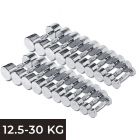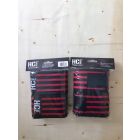Belt squat machine
With this new generation, you can earn the highest possible profit because the starting position is higher.
A great way to massively train your leg muscles with a high level of difficulty. Since the weights move above the waist, you can train the lower body without straining the back.
Especially useful for those struggling with shoulder, wrist, neck or lower back injuries.
The product is currently not in stock
Ordering to a store: 21 work days
What are the main differences when compare traditional squats and belt squats with machine?
Traditional squats and belt squats with a machine are both effective lower body exercises, but they have several key differences in terms of technique, equipment, and muscle engagement. Here are the main differences when comparing the two:
1. Equipment and Setup:
- Traditional Squats: In traditional squats, you use a barbell placed on your upper back or shoulders, and you perform the exercise by lifting the barbell while standing on your feet. You can also do bodyweight squats without any added weight.
- Belt Squats with Machine: Belt squats use a specialized machine equipped with a belt or harness that you attach to your hips or waist. The machine typically has a platform for you to stand on or move around on.
2. Load Placement:
- Traditional Squats: The load (barbell or weight) is placed on your upper body, which includes your shoulders, traps, and upper back.
- Belt Squats with Machine: The load is attached to your hips or waist through the belt or harness, allowing you to focus solely on your lower body without the weight on your upper body.
3. Muscle Engagement:
- Traditional Squats: Traditional squats engage not only the lower body muscles, such as the quadriceps, hamstrings, and glutes but also the upper body and core muscles to stabilize and support the weight.
- Belt Squats with Machine: Belt squats primarily target the lower body muscles without involving the upper body. This can be advantageous if you want to isolate and focus on leg development.
4. Technique:
- Traditional Squats: Traditional squats require you to perform a compound movement, where you bend at your hips and knees simultaneously while maintaining an upright torso.
- Belt Squats with Machine: Belt squats involve a more straightforward movement pattern, where you mainly bend at your hips and knees without the need to balance a barbell on your back.
5. Versatility:
- Traditional Squats: Traditional squats are versatile and can be performed with various equipment, such as barbells, dumbbells, or just your body weight. They can also be modified to target different muscle groups and fitness levels.
- Belt Squats with Machine: Belt squats are relatively specialized and typically require access to a specific machine designed for this exercise.
6. Safety and Accessibility:
- Traditional Squats: Traditional squats require proper technique to prevent injury, and beginners may struggle with balance and form. However, they can be performed with minimal equipment.
- Belt Squats with Machine: Belt squats with a machine provide a safer and more controlled environment, making them suitable for individuals with limited experience or those recovering from injuries.
Ultimately, the choice between traditional squats and belt squats with a machine depends on your specific goals, fitness level, and equipment availability. Many people incorporate both variations into their leg training routines to reap the benefits of each approach.
To whom the belt squats fits better?
Belt squats can be beneficial for various individuals, but they may be particularly well-suited for certain groups of people due to their unique advantages. Here are some scenarios in which belt squats may be a good fit:
- Individuals with Lower Back Issues: Belt squats can be a safer alternative for people with lower back pain, injuries, or limitations. Since the load is distributed around the hips and waist rather than placed on the upper back, there is less stress on the lumbar spine.
- Beginners: Belt squats are generally easier to learn and perform with good form compared to traditional barbell squats. This makes them suitable for beginners who may need to develop proper squatting mechanics before progressing to barbell squats.
- Individuals with Upper Body Limitations: People with upper body mobility or strength limitations that prevent them from safely performing traditional squats with a barbell can benefit from belt squats. The belt allows them to focus solely on lower body training without the upper body involvement.
- Rehabilitation and Injury Recovery: Belt squats can be used in rehabilitation programs for those recovering from lower body injuries, surgeries, or knee issues. They provide a controlled and safe way to work the lower body without aggravating existing injuries.
- Bodybuilders and Leg Development: Bodybuilders and individuals seeking to isolate and target their leg muscles for hypertrophy may find belt squats beneficial. They allow for intense leg training while minimizing upper body fatigue.
- Functional Fitness and Sport-Specific Training: Athletes in sports that require lower body power, such as sprinters, jumpers, and football players, may incorporate belt squats to enhance their leg strength and explosiveness.
- Home Gym Owners: For individuals with limited space or equipment at home, a belt squat machine can be a valuable addition, as it provides an effective leg workout without the need for a full squat rack or barbell setup.
It's important to note that while belt squats offer advantages in certain situations, they should not necessarily replace traditional squats in a well-rounded strength training program. Both variations have their place, and incorporating a variety of exercises can lead to more comprehensive fitness and muscle development. Additionally, it's advisable to consult with a fitness professional or physical therapist to determine the best exercises for your specific needs and goals.
| Brand | HC PRO |
|---|---|
| Length | 1980 mm |
| Width | 1420 mm |
| Height | 1320 mm |
| Muscle group | Legs |
| Color | Black |
Here's other information on how to make TAX Free order(s) without any contracts straight to your own door:
Here you'll find how to register your own company on our site and how to buy with 0% tax.
